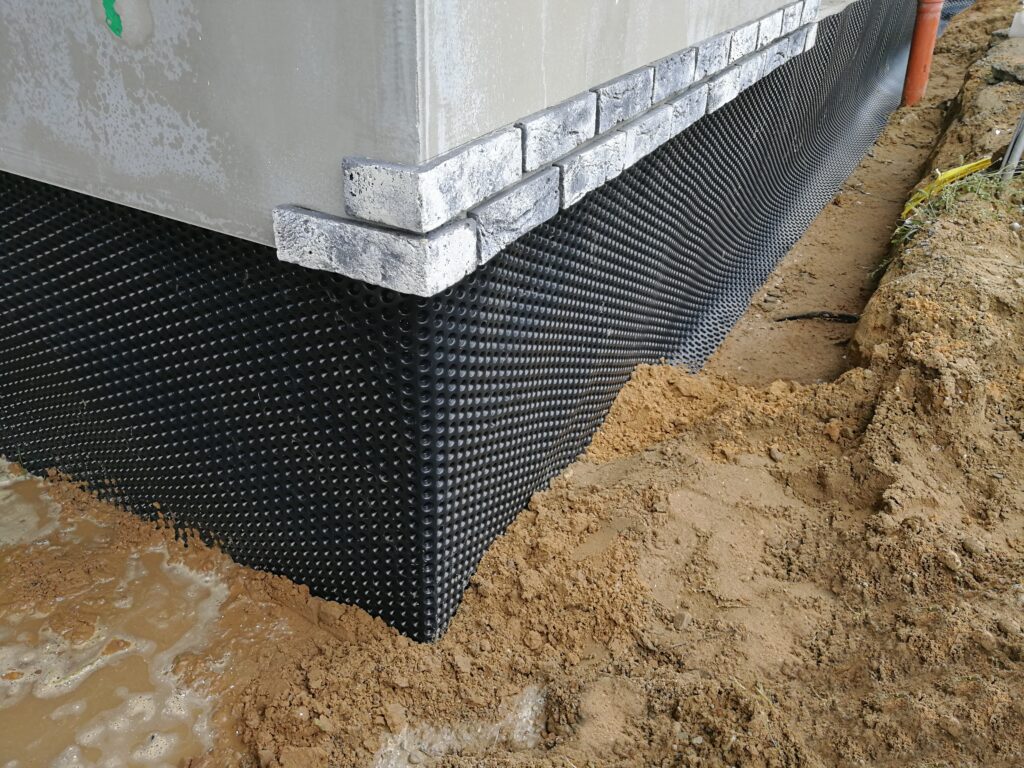How Winter Moisture Can Damage Your Foundation
As winter weather sets in, excess moisture can be a hidden threat to your home’s foundation. Without proper foundation moisture control, the combination of melting snow, rain, and fluctuating temperatures can create significant risks to your home structure protection. Water damage prevention becomes critical, as moisture infiltrates your foundation walls, potentially causing cracks, structural shifts, and long-term damage. By taking the right steps, you can prevent costly repairs and keep your foundation secure throughout the winter months.
Why Winter Moisture Threatens Your Foundation
During the winter months, the freeze-thaw cycle causes water to freeze in and around your foundation, leading to expansion and contraction. This process can create cracks in your foundation walls and allow moisture to seep in. If not addressed promptly, this can cause water damage that threatens the overall stability of your home. Here’s how moisture can impact your foundation:
- Cracking Foundation Walls: The freezing and thawing process can expand water in the soil around your foundation, causing cracks to form and weaken the structure.
- Soil Shifting: Excess moisture can saturate the soil, leading to shifting that places unnecessary pressure on your foundation walls.
- Mold and Mildew Growth: Moist environments are prime breeding grounds for mold, which can worsen water damage and compromise your indoor air quality.
- Water Infiltration: Without foundation moisture control, water may seep into your basement or crawl space, leading to costly repairs and mold problems.
- Energy Loss: Damp foundations can cause drafts and make your home more difficult to heat, increasing your energy bills.
Signs of Water Damage to Watch For
It’s essential to recognize early warning signs of moisture problems to prevent serious damage to your foundation. Keep an eye out for these common indicators of water damage:
- Cracks in Foundation Walls or floors
- Water Stains on walls, ceilings, or floors
- Musty Odors in the basement or crawl space
- Visible Mold or mildew growth
- Standing Water near the foundation or basement areas
- Increased moisture levels inside your home
Key Steps for Foundation Moisture Control This Winter
Proper water damage prevention requires proactive steps to manage moisture around your home. Here’s how you can ensure your foundation remains safe from winter’s moisture threats:
- Inspect and Seal Cracks in Your Foundation
Small cracks in your foundation wall can allow moisture to infiltrate, leading to significant water damage over time.
✔ Regularly inspect your foundation for visible cracks.
✔ Seal cracks with waterproof sealants to prevent moisture from entering.
- Maintain Proper Drainage Around Your Home
Effective drainage helps direct water away from your foundation, reducing the risk of damage.
✔ Clean gutters and downspouts regularly to prevent water from collecting near your foundation.
✔ Use extensions on downspouts to direct water at least six feet away from your home.
✔ Ensure your drainage system is functioning properly to prevent water pooling around the foundation.
- Install Vapor Barriers in Your Basement and Crawl Space
Vapor barriers reduce moisture in basements and crawl spaces, protecting your foundation from water damage.
✔ Install heavy-duty plastic sheeting to cover dirt floors and walls in these areas.
✔ Seal the edges tightly to prevent moisture from seeping in.
- Control Indoor Humidity Levels
Excess humidity inside your home can contribute to foundation moisture control issues, leading to mold growth and structural damage.
✔ Use a dehumidifier in your basement and crawl space to keep moisture levels in check.
✔ Keep windows open when possible to allow for better air circulation.
✔ Insulate water pipes and appliances to prevent condensation.
- Insulate Your Foundation Walls
Adding insulation can help maintain a dry, warm environment around your foundation, preventing water from infiltrating.
✔ Install foam or spray insulation on your foundation walls to reduce condensation and water seepage.
- Check Plumbing for Leaks
Leaks in your plumbing systems or appliances (such as washing machines or dishwashers) can introduce moisture into your foundation.
✔ Inspect pipes for any leaks or signs of damage.
✔ Make sure all appliances are properly connected and secure to avoid leaks that could contribute to water damage.
When to Call a Professional for Foundation Moisture Control
If you notice any signs of foundation issues or struggle with controlling moisture, it’s a good idea to contact a professional foundation repair service. They can perform thorough inspections to identify hidden issues, ensure proper water damage prevention, and recommend the best solutions to protect your home’s structure.
Conclusion
Foundation moisture control is crucial during the winter months when excess moisture can wreak havoc on your home’s foundation. By taking the right steps to manage moisture and prevent water damage, you ensure the long-term stability and safety of your home. Regular inspections, proper drainage, and water damage prevention can help you maintain your home structure protection and avoid costly repairs down the road.
Don’t wait for moisture to cause problems—contact us today for expert advice and services on foundation moisture control to safeguard your home this winter!

